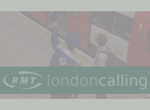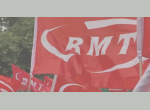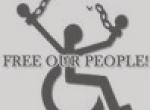London Underground Ltd claims that the red 'Here to Help' tabards make staff more visible to passengers, especially to visually-impaired passengers. RMT argues that the only effective way to make staff more visible is to employ more staff.
Below, two visually-impaired passengers explain why they share this view, and why they want more staff rather than red vests.
===
I am visually impaired, a guide dog user, and regularly travel on the Underground. Red tabards will not work for me. I am reliant on assistance from platform staff every time I travel by Underground and this has become noticeably more difficult over the past couple of years as staff shortages often mean there is a significant delay in getting support and destination and/or interchange stations.
Rob Murthwaite
===
To London Underground
I am a Severely Visually Impaired person and a very regular user of the London Underground.
I also work with newly Visually Impaired people who have many different eye conditions and degrees of useable sight.
I have heard that London Underground intends to issue its station staff with brightly coloured bibs with Here to Help written on them.
I think this unfortunately demonstrates a significant lack of understanding by London Underground regarding Disability and Visual Impairment awareness.
While I am sure many Disability charities will welcome this it is actually not very helpful for the majority of Disabled and Visually Impaired people.
What is really needed and is most valued and useful is well-trained staff with a thorough grounding in Disability awareness.
This helps everyone as everyone is different and has different challenges to travelling on the tube.
A bib is a one-size-fits-all approach.
I am totally Blind so it doesn’t help me at all.
Many visually impaired people with useable sight need to scan around mainly avoiding passengers and can’t see or identify people in bibs.
Newly Visually Impaired people find travelling very stressful and scary.
Having staff recognise them as people who may welcome assistance is a great reassurance.
Their needing to look around for bibs is not helpful.
What they want and need is a staff member who can identify that they may need assistance and who then acts appropriately on that.
My regular experience is a staff member spotting my white cane and coming up to me saying “Hello, I am a member of staff, would you like any assistance?”.
In short, they see me, identify themselves to me and check whether I would like help or not. This gives me a choice and isn’t patronising.
It also means staff become increasingly aware and sensitive to how best to spot and help travellers who may like assistance.
It means staff are proactive and not passive helpers.
Bibs may make London Transport seem like they are doing something positive but it is more good PR than actual help.
I do not want or need to be guided by a person with a bright bib labelling me and setting me apart any more than I am already.
Will it be flashing lights on caps next?
More staff is what we need and more well trained staff.
I am happy to provide more information on this issue if it would be helpful.
With best regards
Roger Lewis
====
Following the publication of this post, a wheelchair user added the following comment:
Is that what those bibs are about? I've been approached by people in them a few times in central London train stations, and I've always told them (as politely as possible) to f*ck off and headed off to find a person in uniform who looks like they actually worked there to put the ramp out for me. The people in bibs look and act like volunteer candystripers as some commercial publicity stunt, so that's what I assumed they were. I never knew they were staff.
As a wheelchair user I want step free access from the street outside to the train. I would quite like to simply board a train the same as everyone else. Failing that, I want friendly staff to put a ramp out for me. I do NOT want to be part of a publicity stunt, and I don't want any flashing neon clad candystriper with their underpants outside their trousers visually going 'hay, look, everyone, look here, we got a cripple and we're helping her on the train, aren't we great'. A bit of discretion and respect for the dignity of disabled passengers goes a long way.
Ciara Doyle
- Janine's blog
- 3433 reads






